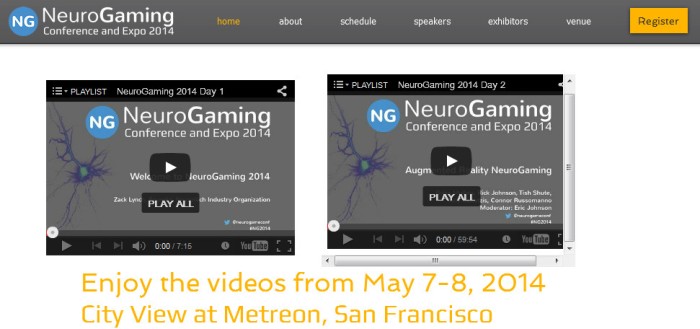Neurogaming: Game Makers Want You to Play Using Your Brains – Literally!
![By Anders Sandberg from Oxford, UK (BCI) [CC-BY-2.0 (http://creativecommons.org/licenses/by/2.0)], via Wikimedia Commons](https://techtheday.com/wp-content/uploads/2014/06/Brain-Computer-Interface.jpg)
By Anders Sandberg from Oxford, UK (BCI) [CC-BY-2.0 (http://creativecommons.org/licenses/by/2.0)], via Wikimedia Commons
Gaming consoles are not yet dead despite the increasing popularity of gaming with smartphones and tablet computers. PS4 easily proves this point. However, this does not mean that gaming has stagnated with consoles and PCs. There’s Oculus Rift along with Project Morpheus that seeks to lift gaming a notch higher through virtual reality (VR) gaming. But VR tech is not the only way to go after consoles, PCs, and mobile devices. There’s a new field of gaming called “neurogaming” that is bound to revolutionize the way way think of, about, and in gaming.
Overview of Neurogaming
Neurogaming makes use of non-invasive brain-computer interface that can help advance gaming by enabling users to interact with a console directly through the nervous system and related physiological manifestations that can be converted into gaming control signals. Neurogaming may tap on brain waves, heart rate, pupil dilation, expressions, and emotions. It is a recently developed field that still has more unchartered areas left to uncover. So far, there have been only two major conferences held for neurogaming. The latest was held at Metreon, San Francisco from May 7 to 8 this yeaer.
Brain Reading Technology
Neurogaming is not just about the brain and nervous system but these are the two core input sources being harnessed. As such, there is the need to come up with a device or contraption that can detect and translate brain and nervous system signals into something that can be interpreted by a gaming console. Here’s where devices like electroencephalography or EEG headsets come in.
Throw Trucks with Your Mind
A California-based game developer, NeuroSky, developed an EEG headset that can be played with a game very aptly called “Throw Trucks with Your Mind.” As the title suggests, it’s a game wherein a player uses “mind control” to throw trucks around. The game makes use of an electroencephalography headset that can measure separate brainwave frequencies that represent focus and calmness. If you’re interested to play the game, you can actually buy it for $99 at the game’s official website. The $99 price already includes the price of the EED headset.
Outlook
Only a few games that employ brain reading or neurogaming technology are available at the moment. However, it is expected that the development of more games will pick up in a matter of years, once the technology is already polished enough. For now, playing with an EEG headset is probably not going to be that appealing to many gamers because of the technological and adaptation limitations. The technology to properly translate brain waves and other nervous system signals is not yet good enough to offer an experience that can be considered intuitive enough. Many players will most likely still look for the feel of manipulating elements on a screen using their hands, through a joystick or gamepad.
Moreover, players who try playing with games like Throw Trucks with Your Mind will also notice how the controls can be somewhat a hit or miss. Precision cannot be warranted with the technology yet. It may take time to get used to the feeling of how it is to differentiate a relaxed and a focused mind. It would probably take more time to bring intuitiveness and precision together in a brain-computer interface for a game.
Still, a number of companies are now exploring the possibility of creating games and game systems under the neurogaming field. In the last Neurogaming Conference and Expo, major companies and organizations participated. These include Sony Computer Entertainment, iMotions, NeuroSky, Mindo, the Ontario Brain Institute, NextGen Interactions, OpenBCI, Melon, NeuroVox, Sixense, Lumosity, and Synertial.
Other Applications
Mind reading technology, which is the core of neurogaming, is not only applicable to entertainment or gaming. As University of California-San Francisco professor Adam Gazzaley said, “video games can have impact beyond entertainment.” In a forum on merging neuroscience and video games, he said that “ there is an entire field that has grown up that is exploring how games can be designed, or maybe even existing games can be used, to have an impact across many different domains.” Also, there are studies that show how neurogaming technologies can help people who are suffering from Alzheimer’s disease, attention deficit hyperactivity disorder, and other related conditions. Mind reading or brain-computer interface technologies are known to be useful in improving learning and concentration skills.
It’s definitely exciting to find out what more can neurogaming technology offer. Startups like Neuroelectrics have developed an EEG headset designed to stimulate the brain while playing games to treat problems such as chronic pain and depression. The company claims that their product can also be used for stroke rehabilitation. It’s certainly interesting to find out if these claims can translate to real world benefits.

